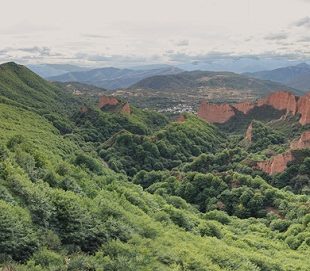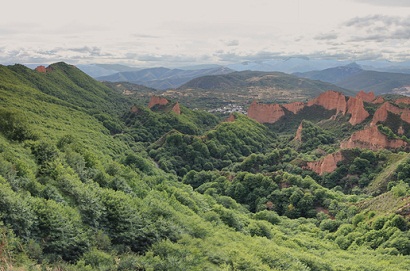
The Way of St. James, Santiago – An iconic symbol of religion and Galicia
The north western ‘communidad de Galicia’ stands alone from Spain for many reasons – Mighty rivers rushing through the green valleys, framed by tumbling waterfalls, dense forests and lush meadows resemble the emerald vistas of Wales or even Ireland instead of the dry and arid landscapes Spain is synonymous with.
Cows munching heartily of the seemingly endless supply of nourishing grass with the bells that dangle around their necks tinkling in the brisk breeze, echoes the backdrop of Switzerland rather than Spain.
The language in this north western point is notably different from the ‘lisp-ness’ of the south and seems to be an eclectic mix of Castilian, Catalonian and even Portuguese. But perhaps one of the most unique icons of this culturally autonomous region is the swathes of pilgrims that can be seen making their way on foot to the city of Santiago de Compostela.
As you stand in awe at the magnificent cathedral of Santiago, the one thing that surpasses the splendour and brilliance of this huge, imposing, elaborate and ancient architectural marvel are the hordes of pilgrims literally falling at the cathedral’s feet, ecstatic and triumphant after, for many, a month-long journey on foot to reach this profound and world-renowned religious landmark.
If you arrive at Santiago de Compostela by car you are likely to notice regular signs of the ‘Camino de Santiago’, commonly known as ‘The Way’. The Way refers to the pilgrimage routes to Santiago, which start as far north as France or as far south as Madrid.
This celebrated pilgrimage has existed for more than a thousand years. The legend goes that the remains of Jesus’ apostle St. James were carried by boat from Jerusalem to Galicia and were buried at the Cathedral of Santiago.
During medieval times the Way of St. James was one of the most important Christian pilgrimages. During the Middle Ages the route was travelled by literally thousands of pilgrims each year but faced considerable decline when the Black Death and political rest reared its head in the 16th century.
With the throngs of people determinedly making their way to this inimitable Spanish city, throwing themselves on the ground with the same triumphant rapture an Olympic athlete who’d just won gold might, it is safe to surmise that the pilgrimage to Santiago de Compostelo has regained its former popularity.
These resolute folk are an inspiring icon of the power of religion and the individuality of Galicia.



